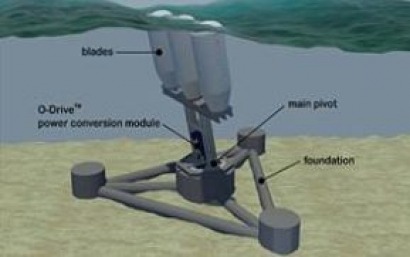
Announcement of the financial support came from Victorian Minister for Energy and Resources, the Hon. Michael O’Brien MP. The funds are being made available through Victoria’s Sustainable Energy Pilot Demonstration Program.
The money will be applied towards the $14 million pilot demonstration of the company’s 250kW bioWAVE ocean wave energy system at a grid-connected site near Port Fairy, Victoria.
“In developing the bioWAVE technology we set out to address the many issues that have bedeviled most wave energy technologies,” said CEO, Dr Timothy Finnigan.
Inspired by the motion of large sea plants under wave action, and conscious of the costs and difficulties of doing development work in the ocean, BPS took the unusual step of spending five years performing multiple on land tests at increasing scale prior to ocean deployment. The most critical component has been tested at full scale at its factory in Mascot NSW (Sydney).
“We are now ready for the ultimate test – installing the bioWAVE in high energy 30-metre deep ocean waters.” Finnigan said. “We have to raise another $3.6 million to complete the project funding, and given our results to date we are confident of achieving this in the coming months. The technology has been positively assessed by more than a dozen independent reviewers.” said Dr Finnigan.
The bioWAVE differs from other wave technologies in three critical ways.
Firstly, it is designed to generate grid compatible electricity ‘in situ’ and hence is connected to the shore via a sub sea electrical cable only. This gives good flexibility on locating the plant, opening up access to greater energy resources, while always transmitting the energy to shore efficiently as high voltage electricity.
Secondly, during extreme wave conditions it will automatically assume a “safe” position lying flat against the seabed. This reduces the structural design requirements (and hence cost) while maintaining reliability.
Thirdly, the design, utilising a patented wide “multi-blade” structure, is expected to capture a much higher proportion of the available energy than other designs.
“We believe bioWAVE will, when fully commercially developed, produce electricity at a price highly competitive with wind and be closer to baseload characteristics than either wind or solar,” Finnigan said. “It is gratifying that the potential of the technology has been recognised by the Victorian government.”
For additional information:

